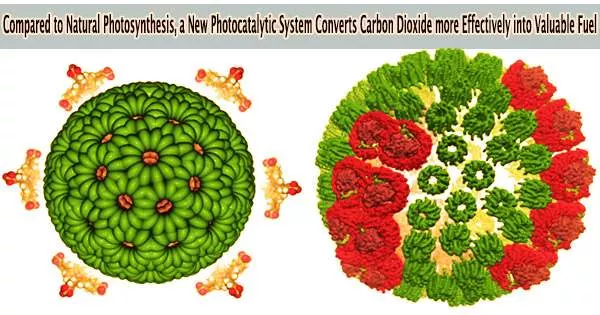A combined research team from City University of Hong Kong (CityU) and partners recently developed a sustained artificial photocatalytic system that is more effective than natural photosynthesis.
In order to efficiently transform carbon dioxide in water into methane, a useful fuel, the new device imitates a natural chloroplast. This is an exciting discovery that might help achieve carbon neutrality.
Chloroplasts in plants and certain other species use sunlight, water, and carbon dioxide during the process of photosynthesis to produce food or energy. Many scientists have attempted to create artificial photosynthesis methods in the past to convert carbon dioxide into carbon-neutral gasoline.
“However, it is difficult to convert carbon dioxide in water because many photosensitizers or catalysts degrade in water,” explained Professor Ye Ruquan, Associate Professor in the Department of Chemistry at CityU, one of the leaders of the joint study. “Although artificial photocatalytic cycles have been shown to operate with higher intrinsic efficiency, the low selectivity and stability in water for carbon dioxide reduction have hampered their practical applications.”
In the latest study, the joint-research team from CityU, The University of Hong Kong (HKU), Jiangsu University and the Shanghai Institute of Organic Chemistry of the Chinese Academy of Sciences overcame these difficulties by using a supramolecular assembly approach to create an artificial photosynthetic system. It mimics the structure of a purple bacteria’s light-harvesting chromatophores (i.e. cells that contain pigment), which are very efficient at transferring energy from the sun.
A extremely stable synthetic nanomicelle, a type of polymer that can self-assemble in water and has both a water-loving (hydrophilic) and a water-fearing (hydrophobic) end, forms the basis of the new artificial photosynthetic system. The nanomicelle’s hydrophilic head functions as a photosensitizer to absorb sunlight, and its hydrophobic tail acts as an inducer for self-assembly.
However, it is difficult to convert carbon dioxide in water because many photosensitizers or catalysts degrade in water. Although artificial photocatalytic cycles have been shown to operate with higher intrinsic efficiency, the low selectivity and stability in water for carbon dioxide reduction have hampered their practical applications.
Professor Ye Ruquan
The nanomicelles self-assemble when submerged in water as a result of intermolecular hydrogen bonding between the tails and the water molecules. With the use of a cobalt catalyst, hydrogen and methane are produced through photocatalytic carbon dioxide reduction and hydrogen production.
The scientists revealed the atomic characteristics of the novel photosensitizer using cutting-edge imaging methods and ultrafast spectroscopy. They discovered that the hydrophilic head of the nanomicelle’s unique structure and the hydrogen bonds formed by water molecules and the nanomicelle’s tail transform it into a stable, water-compatible artificial photosensitizer, solving the issue of artificial photosynthesis’s traditional instability and water-incompatibility.
The photocatalytic process was enhanced by the high light-harvesting antenna effect of the nanomicelle and the electrostatic interaction between the photosensitizer and the cobalt catalyst.
In the experiment, the team found that the methane production rate was more than 13,000 μmol h−1 g−1, with a quantum yield of 5.6% over 24 hours. It also achieved a highly efficient solar-to-fuel efficiency rate of 15%, surpassing natural photosynthesis.
Most crucially, because it doesn’t rely on pricey precious metals, the new artificial photocatalytic system is economically and environmentally sustainable.
“The hierarchical self-assembly of the system offers a promising bottom-up strategy to create a precisely controlled, high-performance artificial photocatalytic system based on cheap, Earth-abundant elements, like zinc and cobalt porphyrin complexes,” said Professor Ye.
Professor Ye said he believes the latest discovery will benefit and inspire the rational design of future photocatalytic systems for carbon dioxide conversion and reduction using solar energy, contributing to the goal of carbon neutrality.
The study was supported by various funding sources, including the National Natural Science Foundation of China, the Guangdong Basic and Applied Basic Research Fund, the Shenzhen Science and Technology Program, and the Hong Kong Research Grant Council.
















